Sometimes the transition from Summer to Autumn can come seemingly quickly. The sun is setting closer and closer to happy hour (and not the late one), the morning air smells like school bus exhaust and in a matter of days you’ve pulled out your booties, then scarves, then big, button-up jackets. Before you know it, the second down comforter is on the bed.
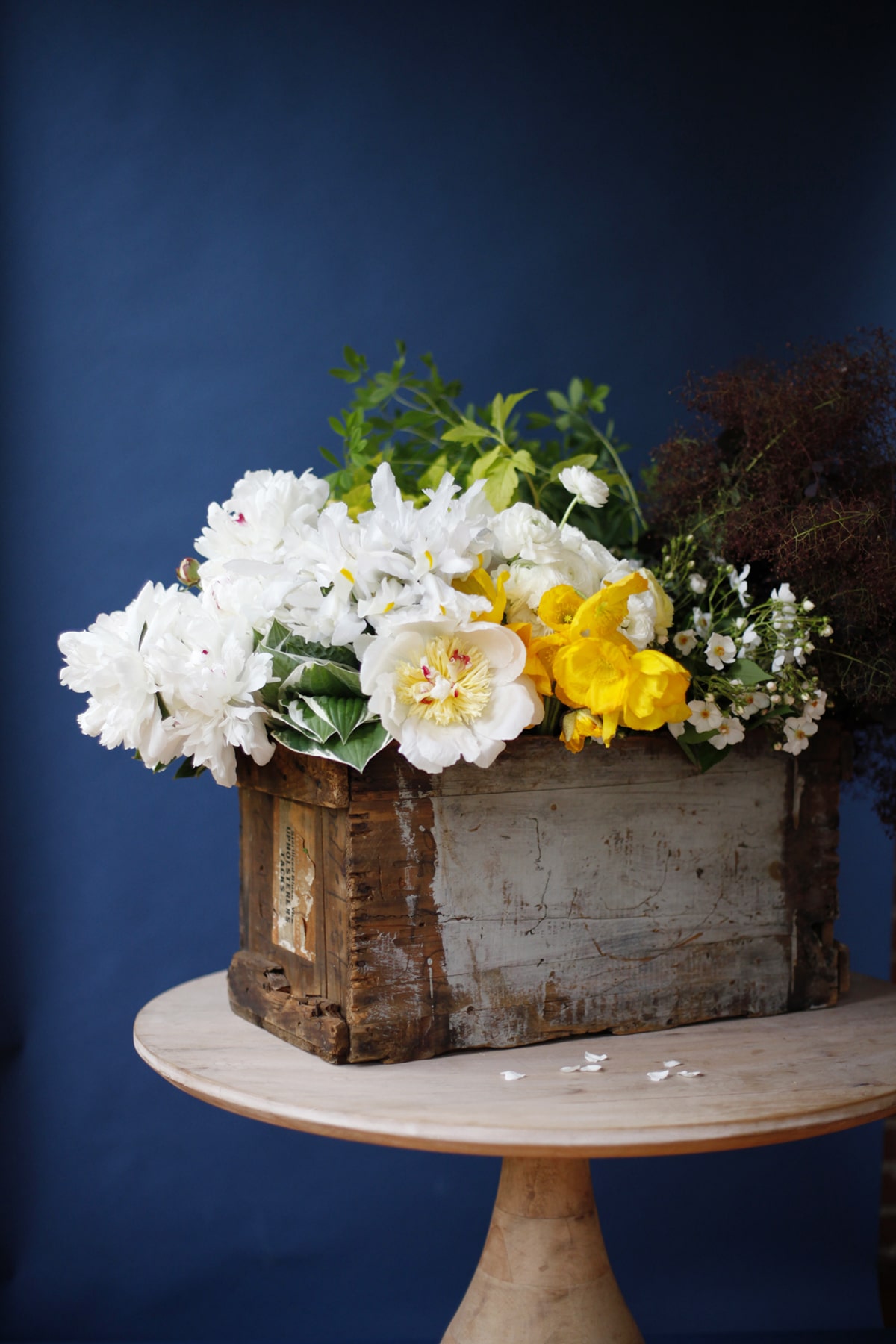
Instead of sharing an obligatory ‘end-of-summer’ or ‘welcome fall’ floral how-to, we thought we would do something a little different. Let’s enjoy a little floral palate cleanser as we move between seasons. Let’s linger in these next few weeks just a pinch longer and let’s bring a little extra peace and calm and unity to our lives where, at this point in our seasons, we especially need this reminder, shall we?
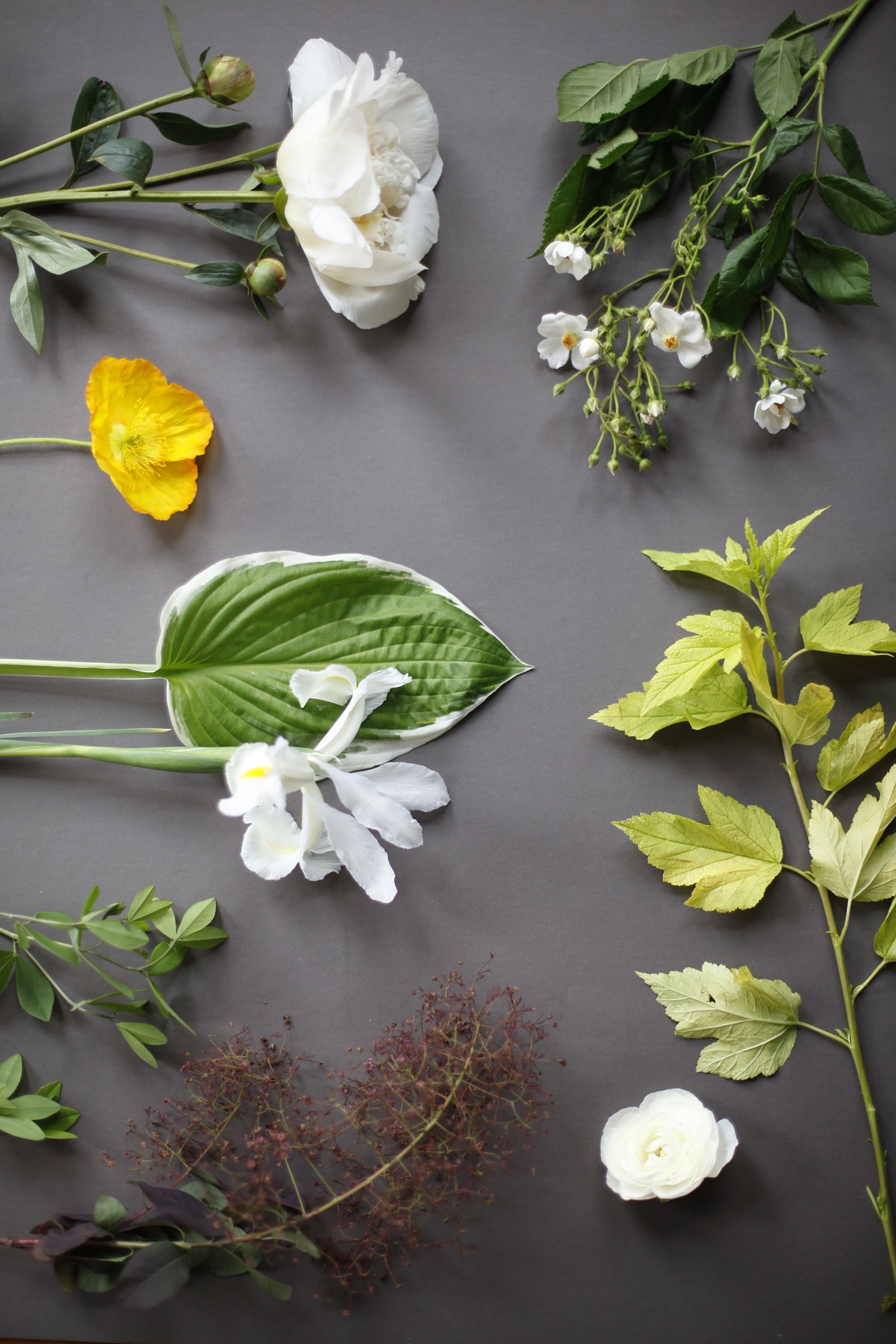
This little floral palate cleanser is going to come in the form of Ikebana, the art of Japanese flower arranging.
This art follows 7 basic principles:
- Silence: Peace and meditation while observing nature.
- Minimalism.
- Shape and Line: Graceful lines that are organic and minimal.
- Form: Finding what is already present in nature, and in yourself, literally and figuratively.
- Humanity: Ikebana can be reflection of your feelings and emotions.
- Aesthetics: Embracing imperfection, elegant subtleties. Elements of mystery or holding back; discipline + attractiveness. Leaving space or void.
- Structure: Ikebana follows the design of a basic, scalene triangle with three main points representing heaven, earth and humanity.
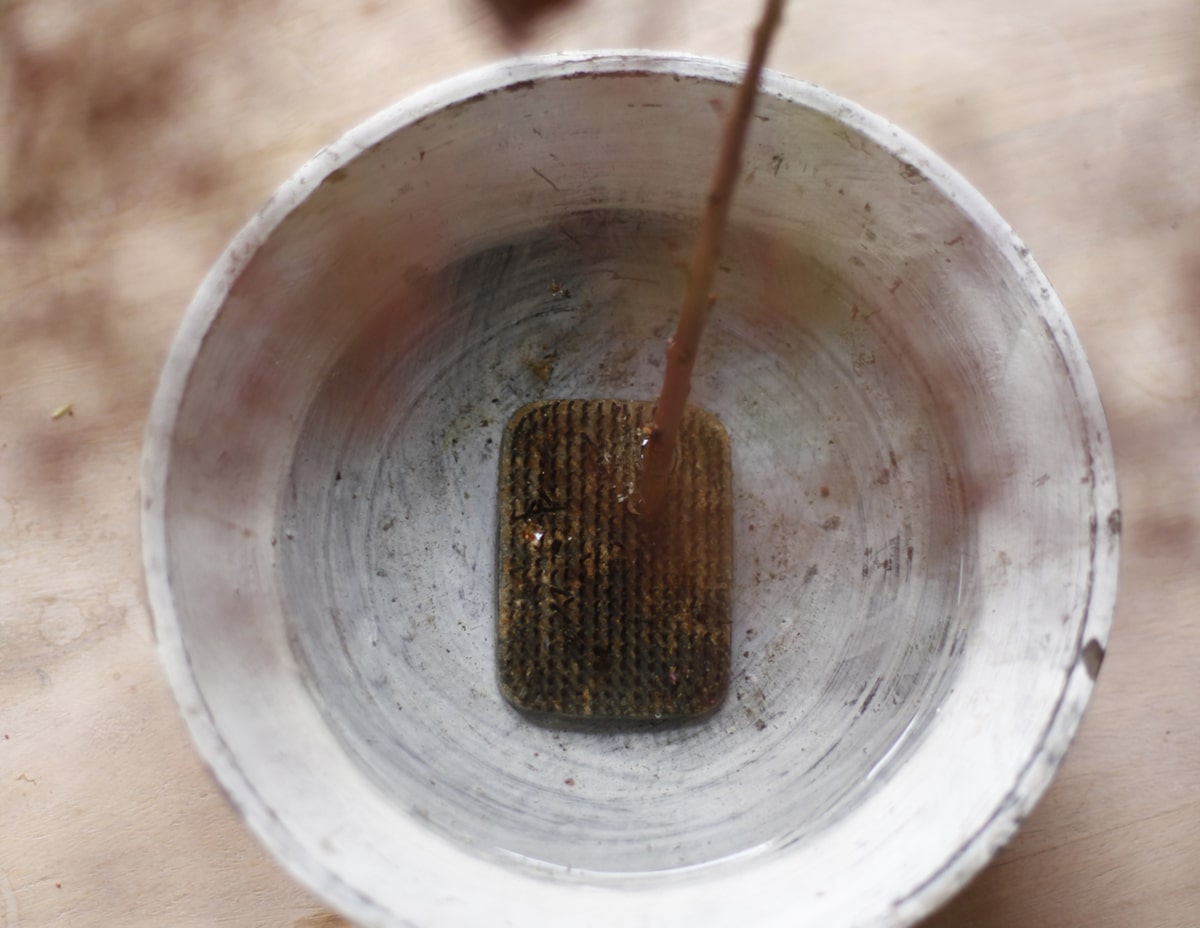
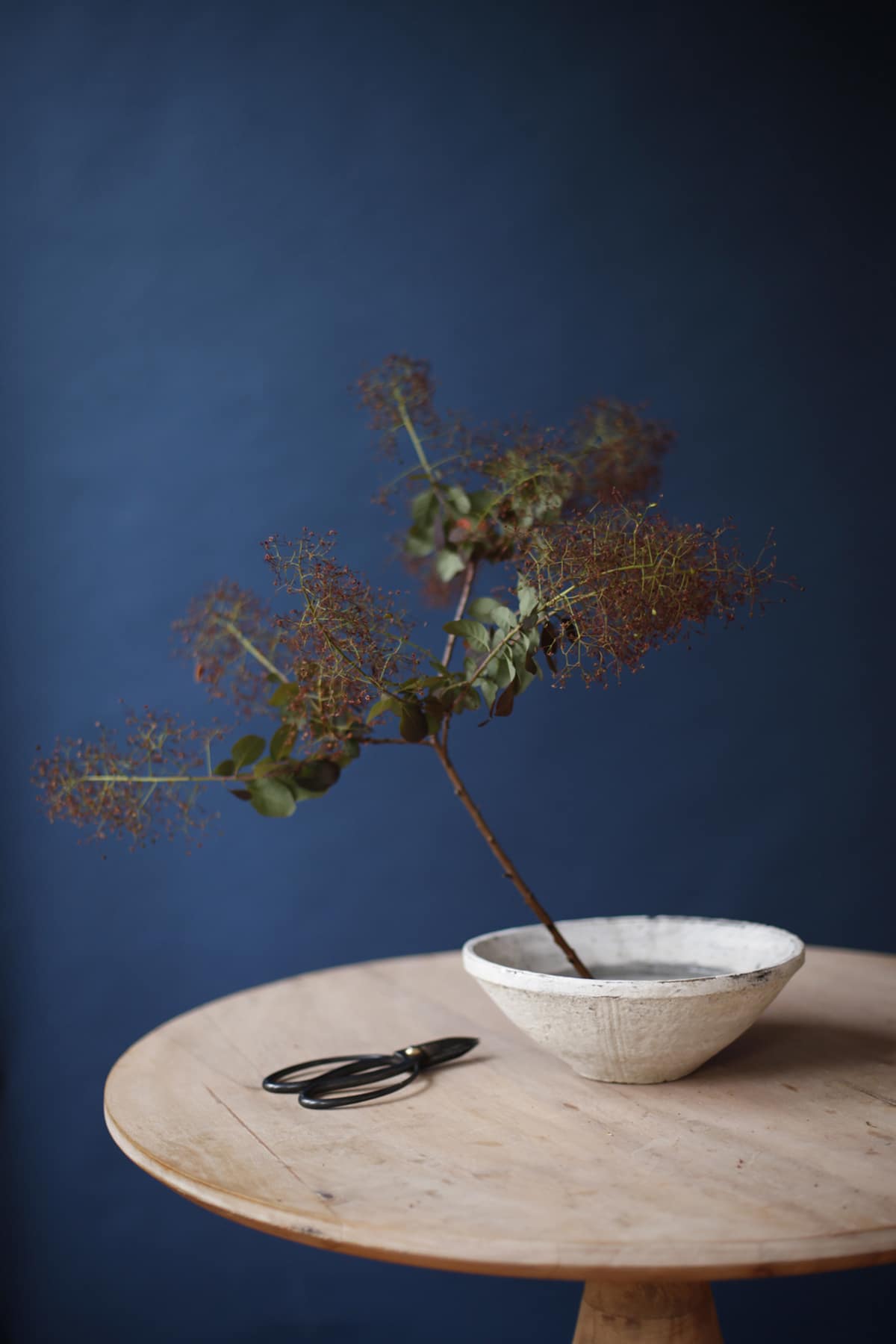
Vessel choice is as important in Ikebana as choosing your floral. I’ve chosen a raw, organic feeling, clay bowl that is heavy in physical stature, but light in tone and texture to the eye. I like how it’s ‘mouth’ is so wide, just welcoming a design to fill it.
I’ve placed a hearty floral frog pin in the bottom and filled the bowl with water just to cover the top of the pins.
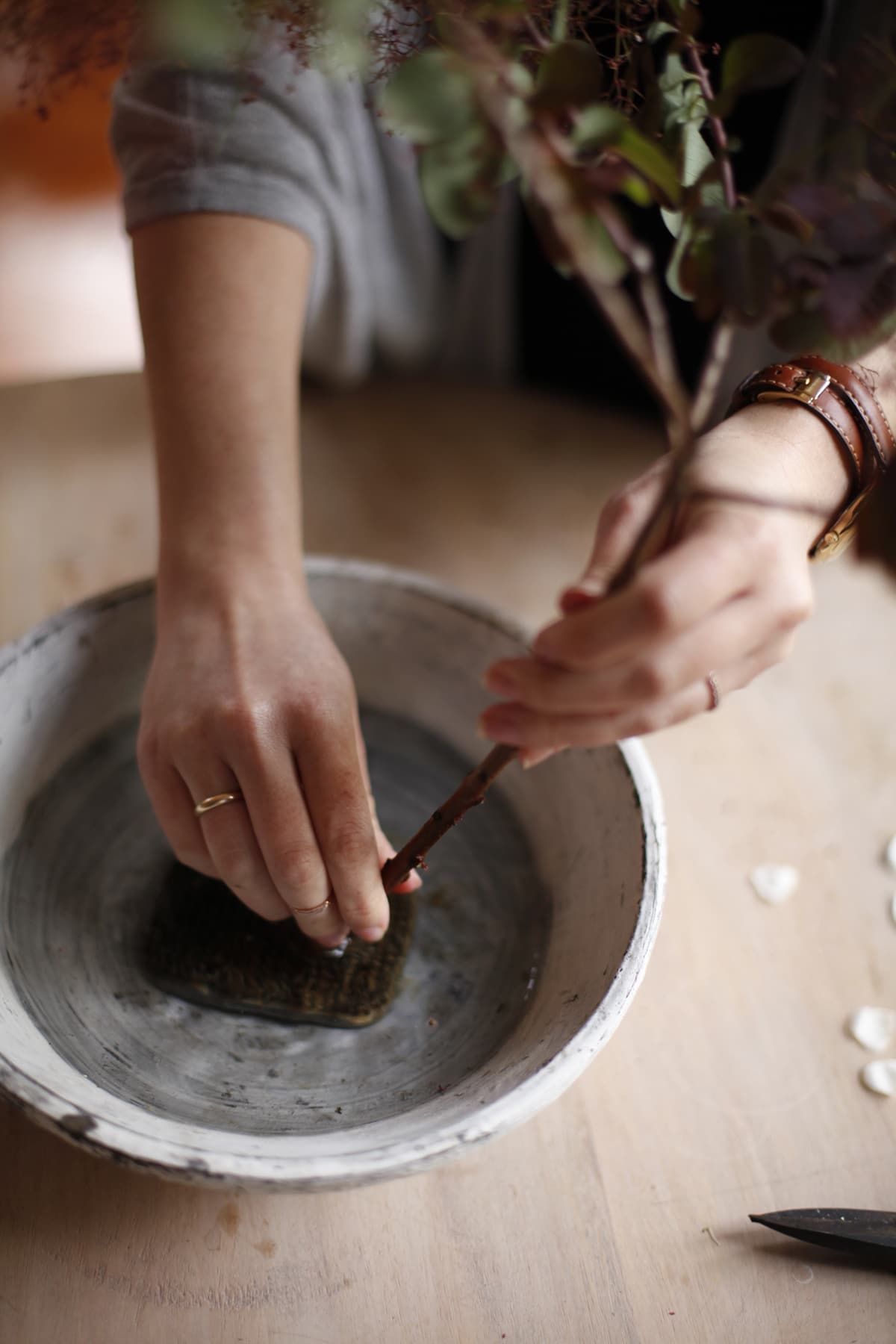
Step One: The first piece of floral I’m choosing to work with is this beautiful Smokebush and it is going to represent heaven. Remember our structure guidelines: scalene triangle with three main points representing heaven, earth and humanity. This first placement representing heaven should literally be an item that grows the highest out of the earth, think woody stems, high reaching trees, etc. and should be placed at the 11am point and should extend the tallest and straightest of all our elements.
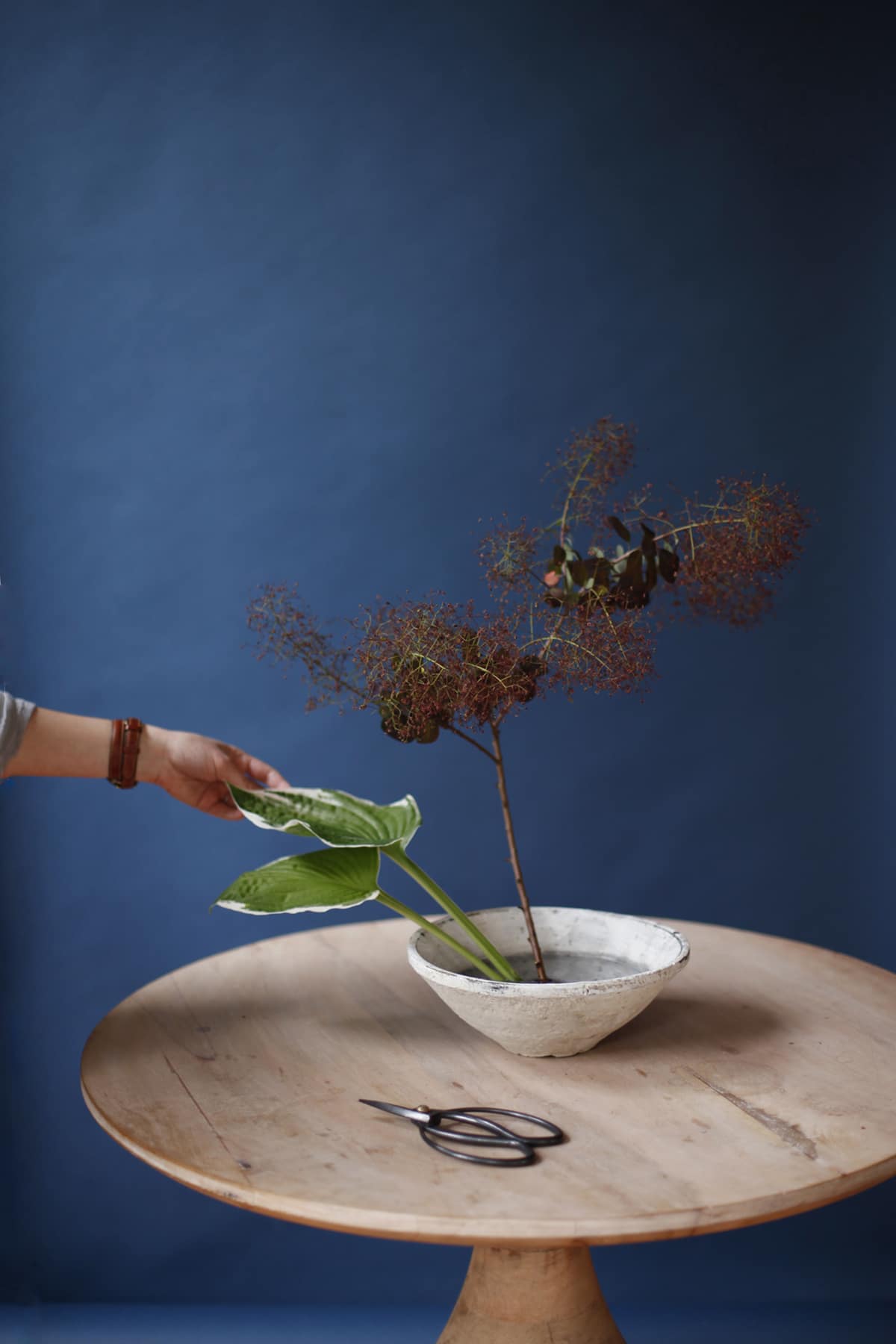
Step Two: The second piece of floral we have are these Hosta leaves. Placed at 8am, and with ¾ the length of the stem of ‘heaven’, our Hosta represents the ‘earth’ element. ‘Earth’ floral elements are typically greenery dominant, although an actual flowers could be used, and are literally plants/flowers that are low growing to the ground.
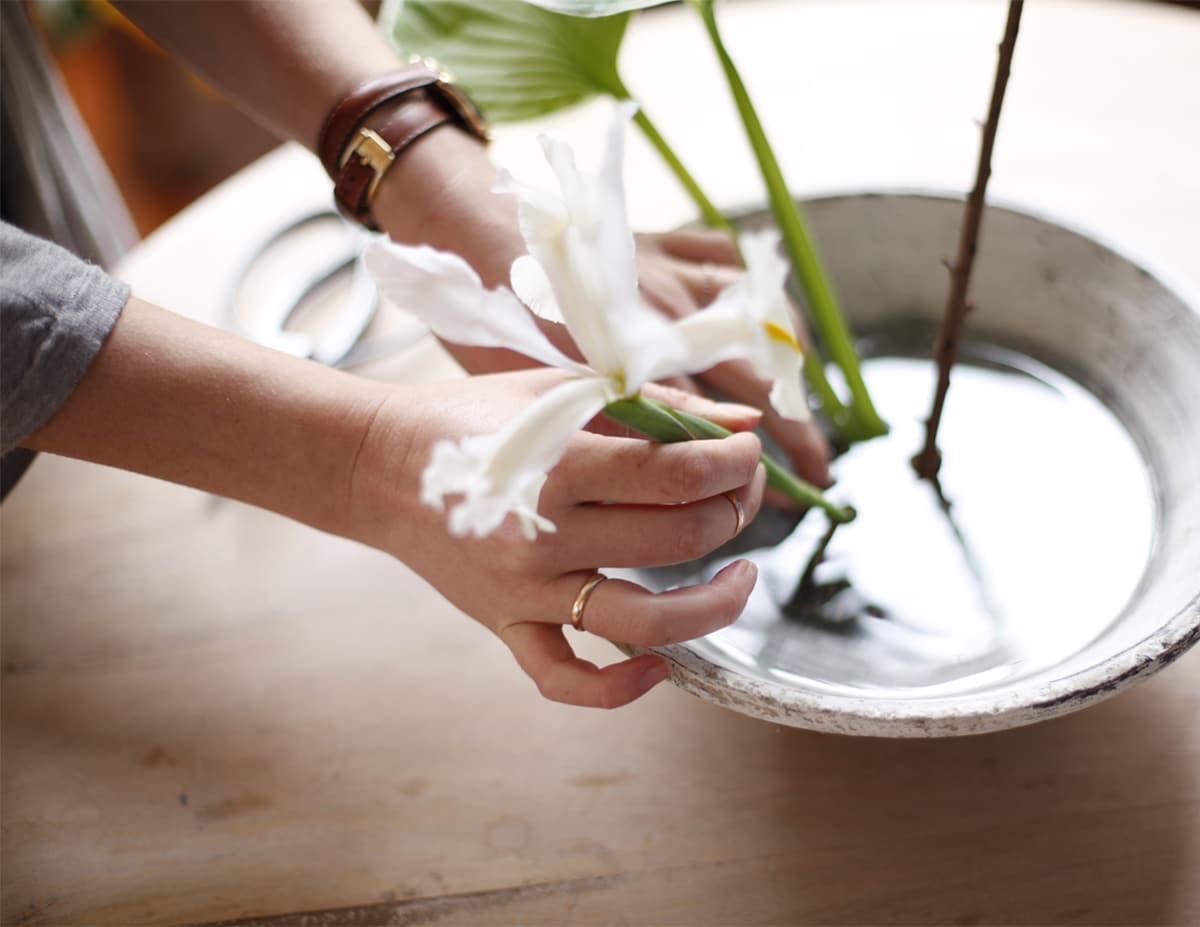
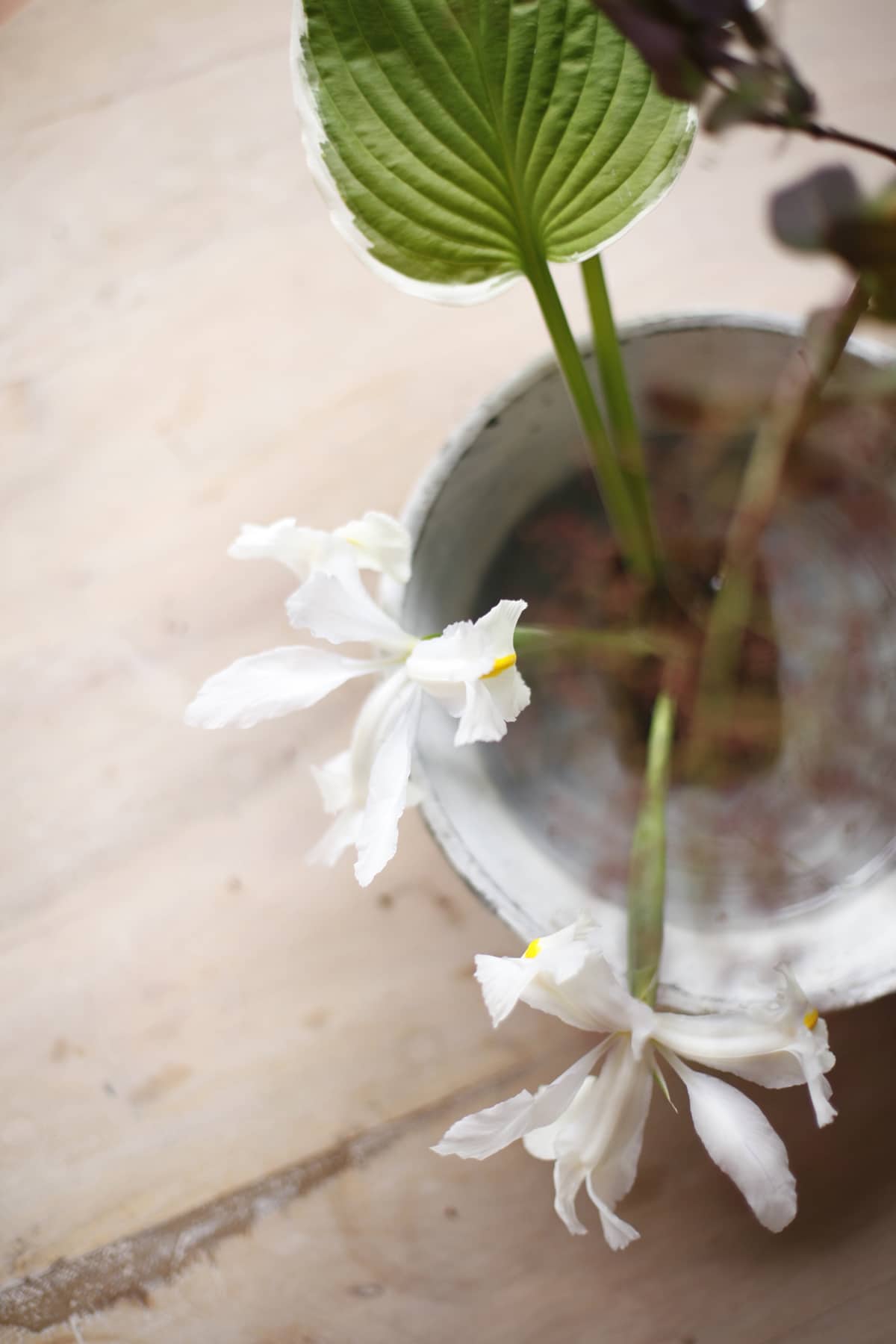
Step Three: The third and final piece of floral we have are these Irises, and they represent ‘man’. At a stem length ¾ the length of the preceding ‘earth’, these Irises are being inserted to the frog pin at the 4am mark. ‘Man’ is considered the third piece because ‘man’ is considered to be the connector from ‘heaven’ to ‘earth’.
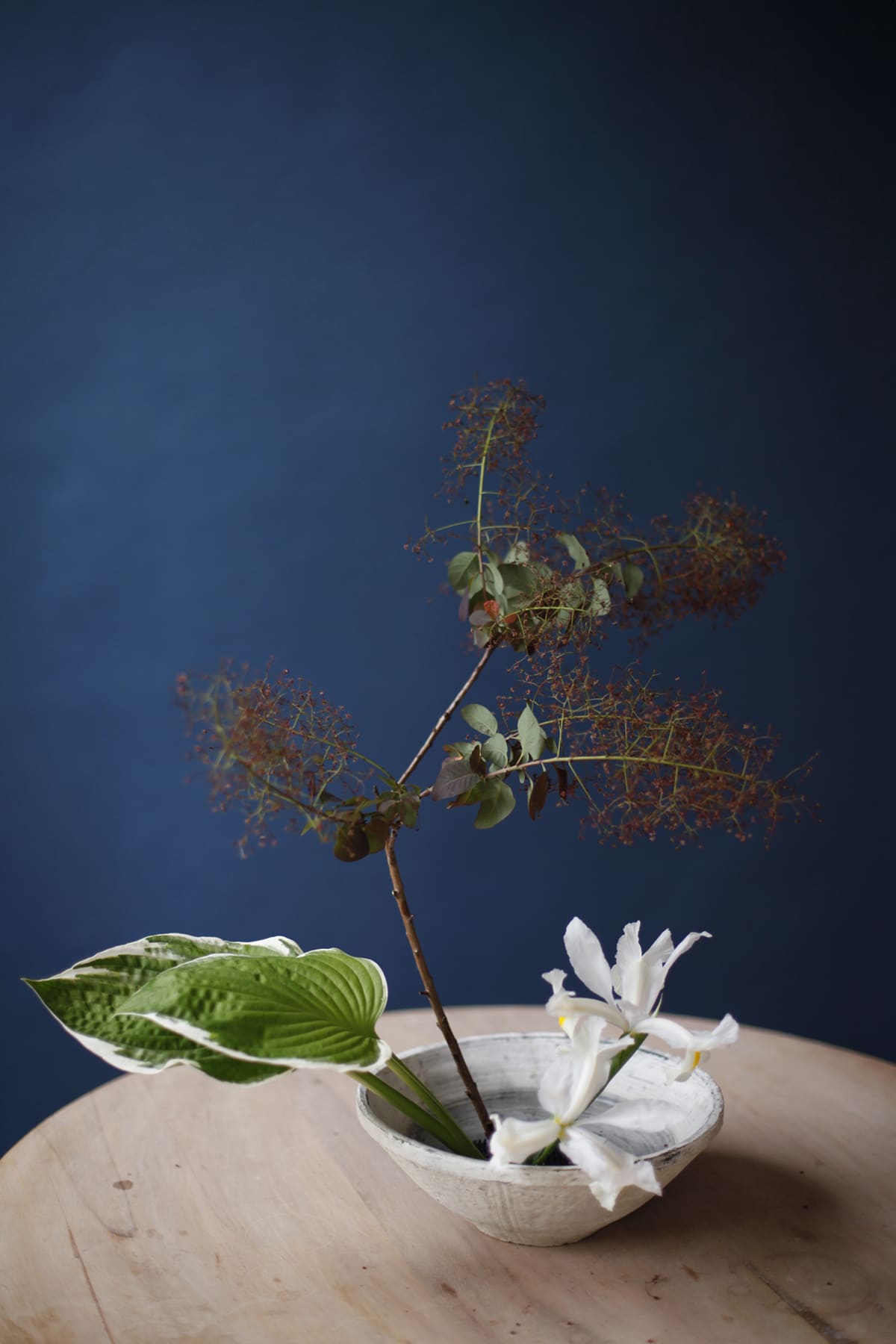
In keeping with the 7 principles of Ikebana, I designed inspired by the airy feeling and billowing shapes the Smokebush, Hosta and Irises all had. Notice their reaching, arching tips? Yet, I like that each of these pieces added have strong, straight, supporting stems. I also like how the darkness of the Smokebush is juxtaposed by the clear, brights of the Iris.
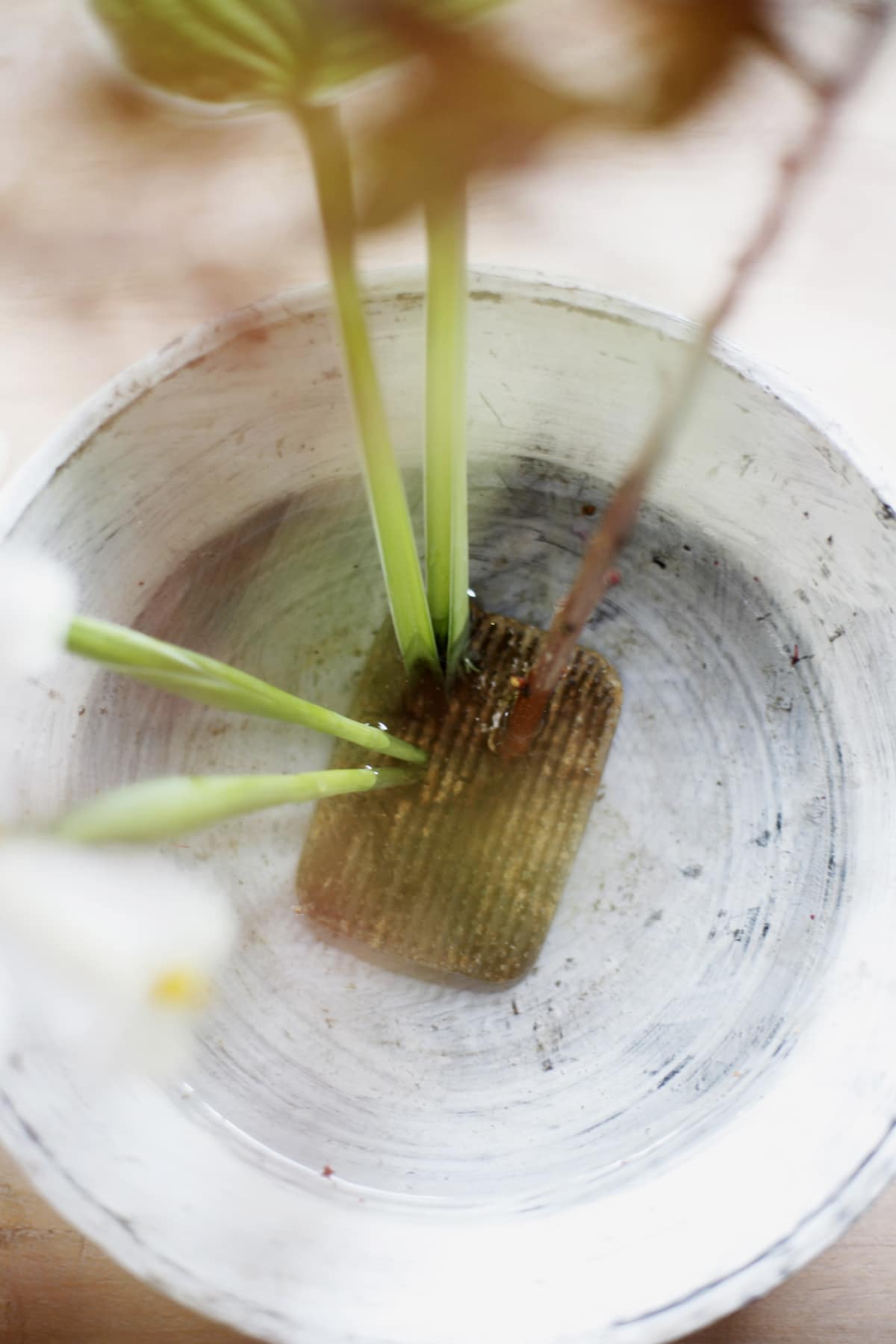
Important to add, your Ikebana arrangement should not only have that triangle shape when viewing from the front (pretend to connect the tips of each of your elements, does it form a triangle?) It also should have a triangle between your three elements when looking down into your frog pin. Can you see the triangle in mine?
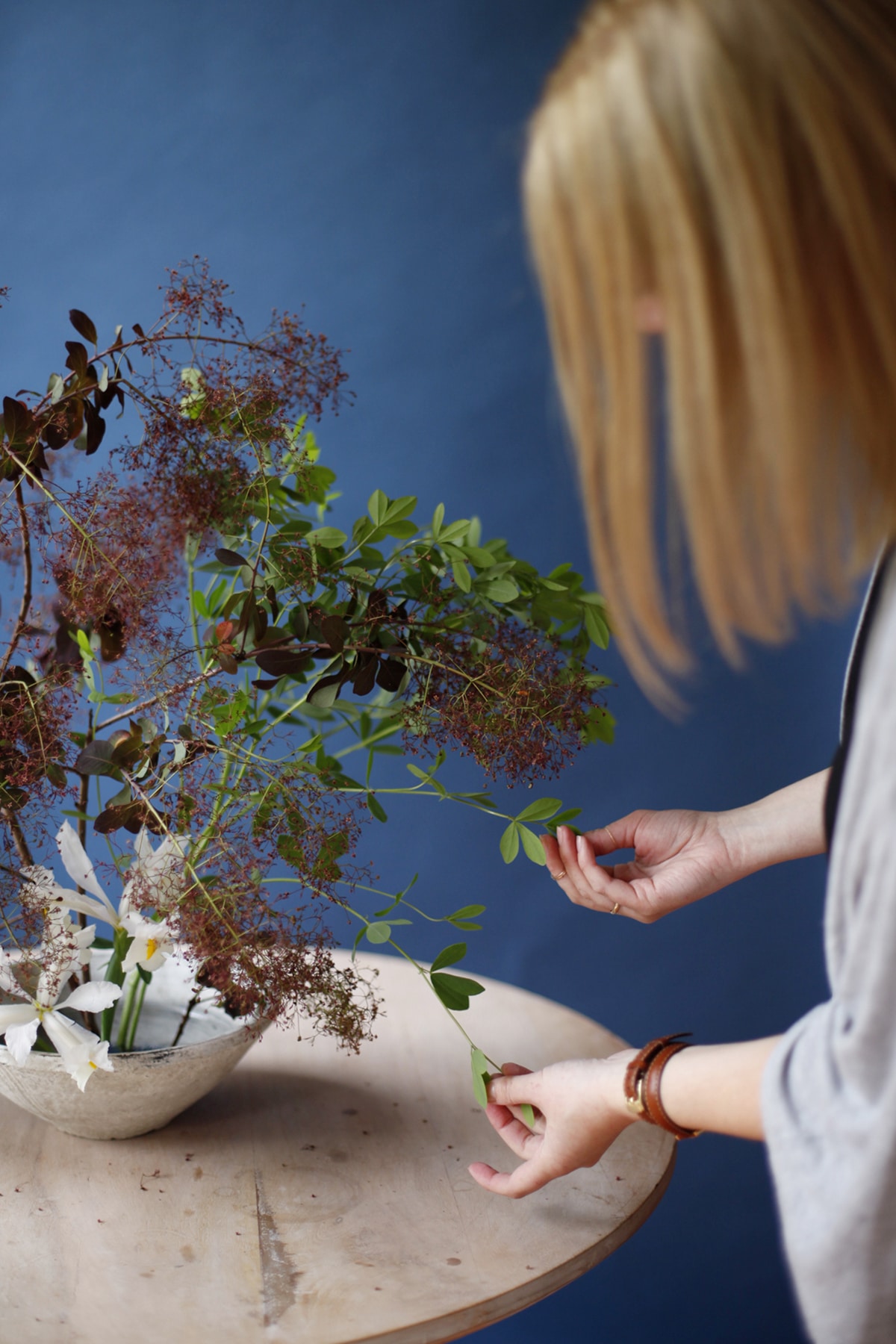
We also wanted to show you how to transform your small, simple creation into something larger and fuller.
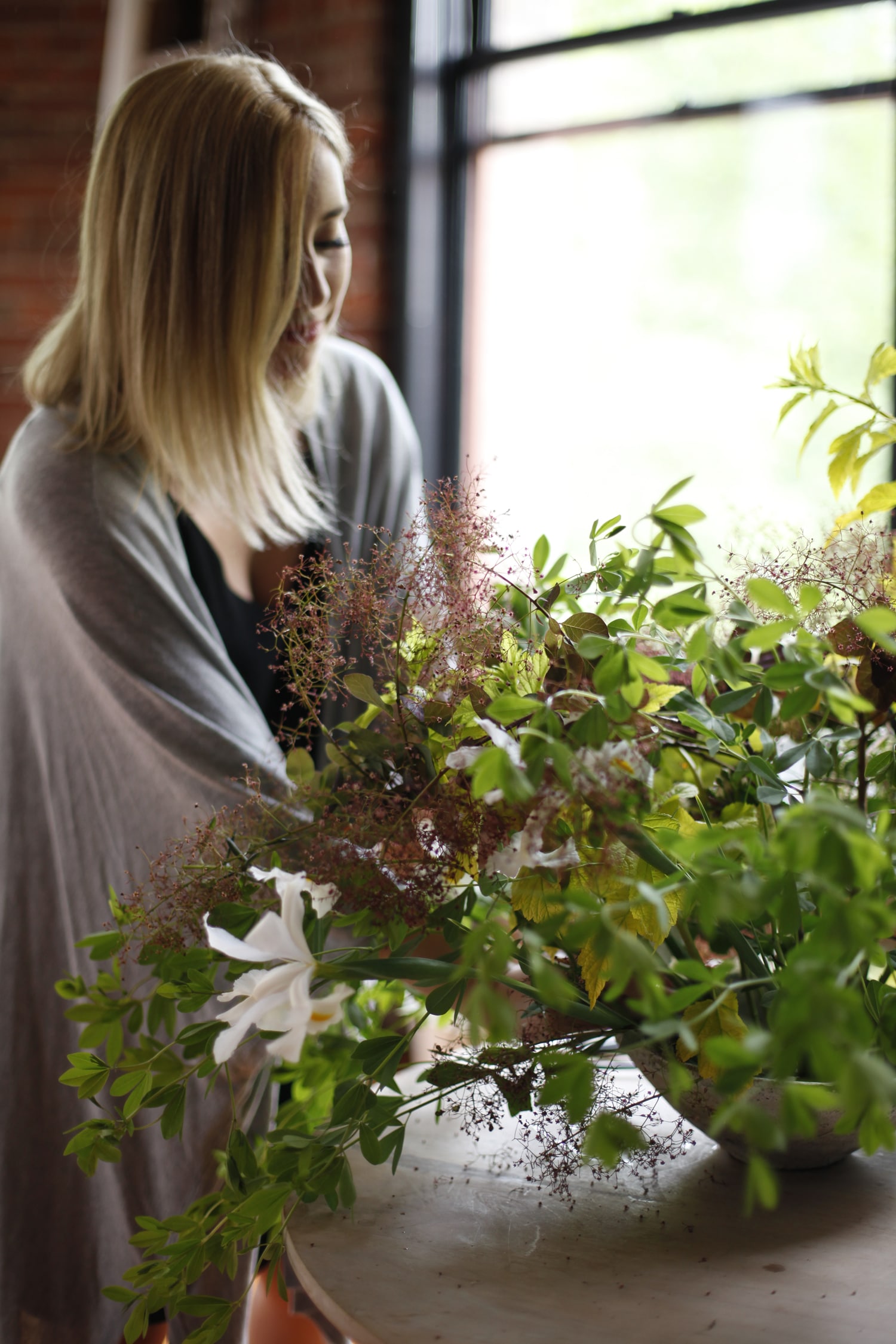
Keeping the design principles of Ikebana in mind, I am simply going to add more of my ‘heaven’, ‘earth’ and ‘man’ elements to the base I’ve already arranged.
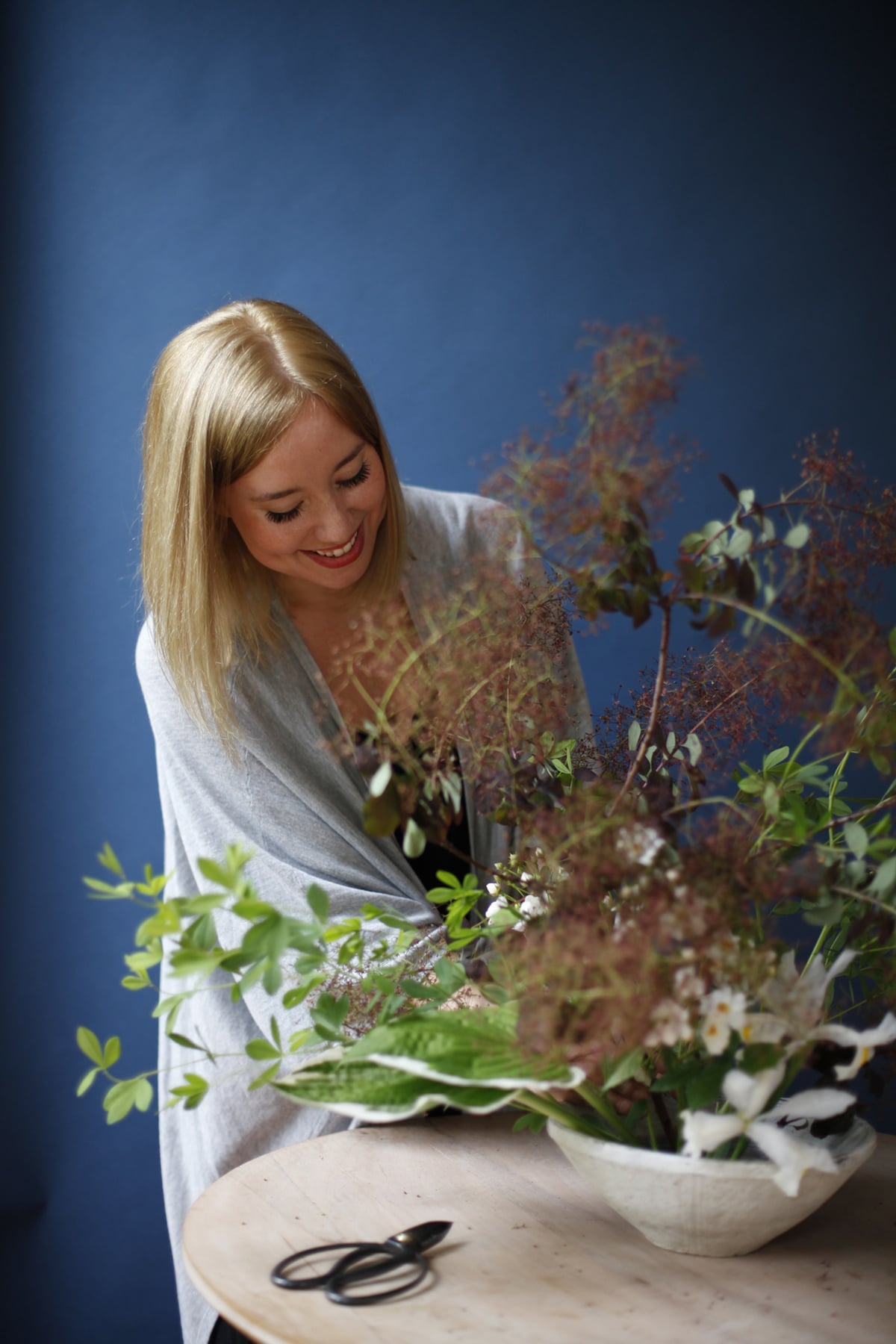
I’m following the asymmetrical shape my elements are hinting towards, yet leaving space and air, careful not to fill in too heavily.
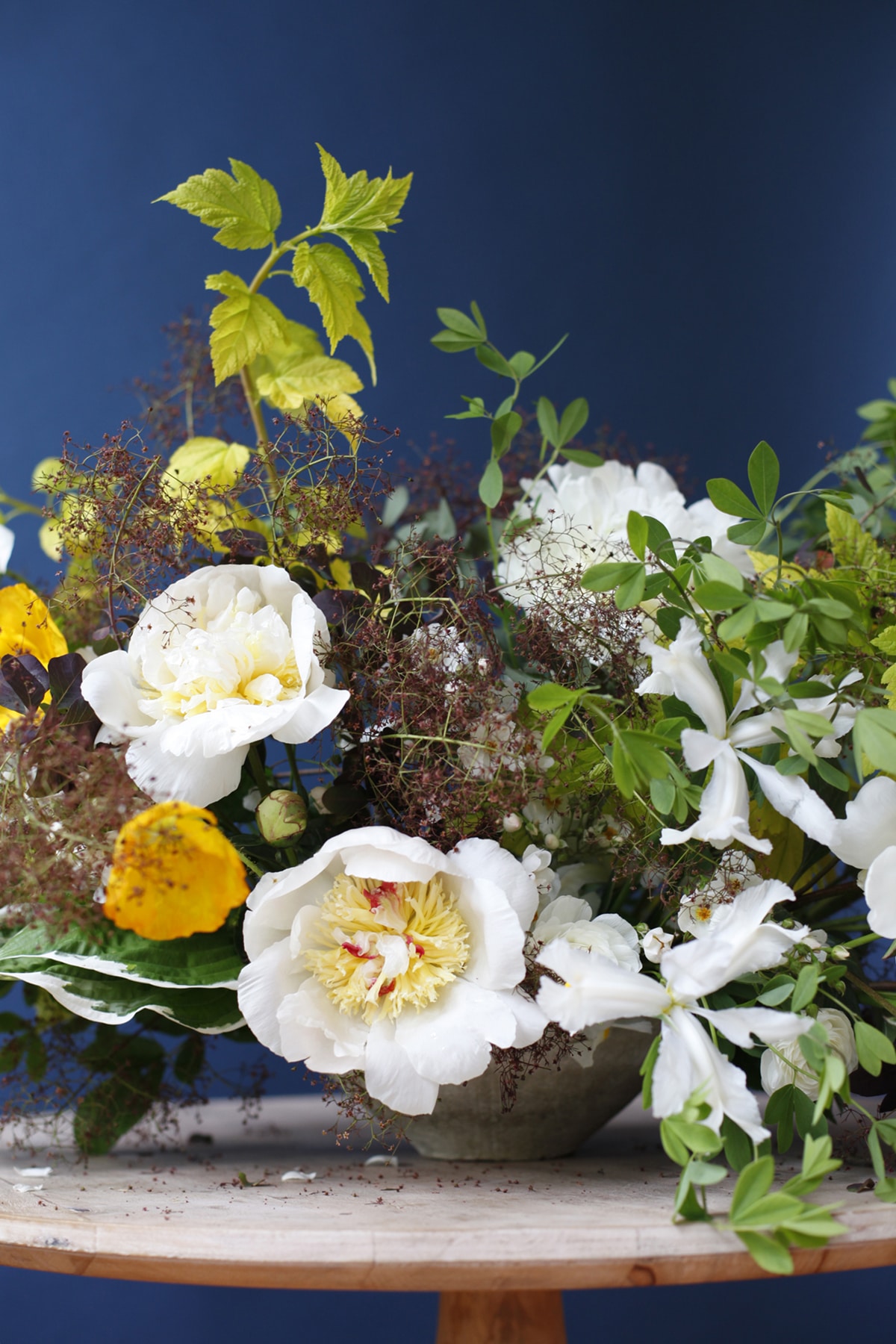
I am using a few more greenery options and more whites (hello peonies!) all while pulling out that tiny yellow pop in my Iris centers by adding in these jolly little Poppies, making sure to leave my green ‘earth’ elements the farthest extended, and my ‘man’ (flower) elements closer to the core or heart of the arrangement.
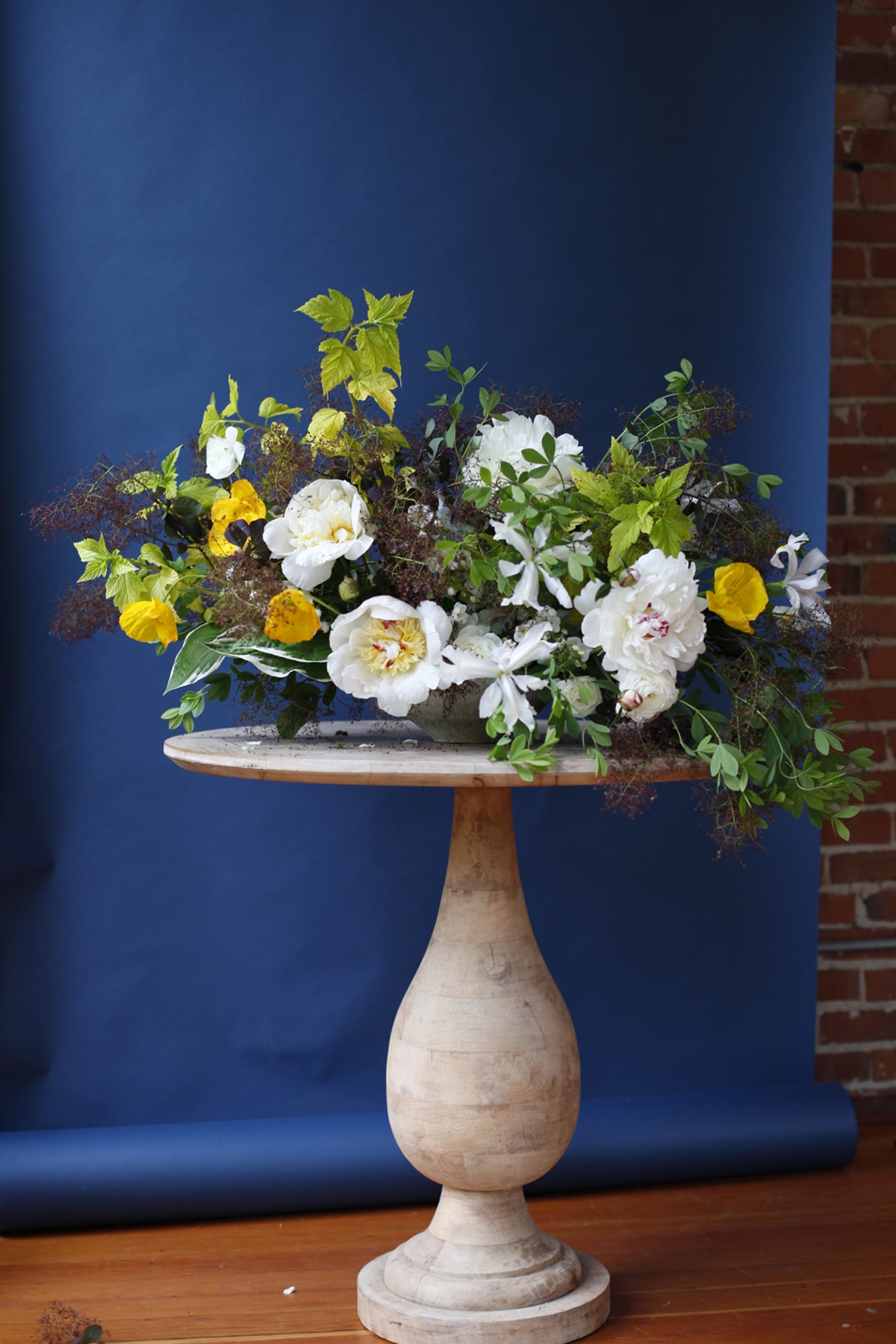
Can you still see the imaginary triangle formed by the three farthest reaching tips of the arrangement? Yes, our traditional Ikebana has taken on a whole new identity, but it’s original roots are still there.
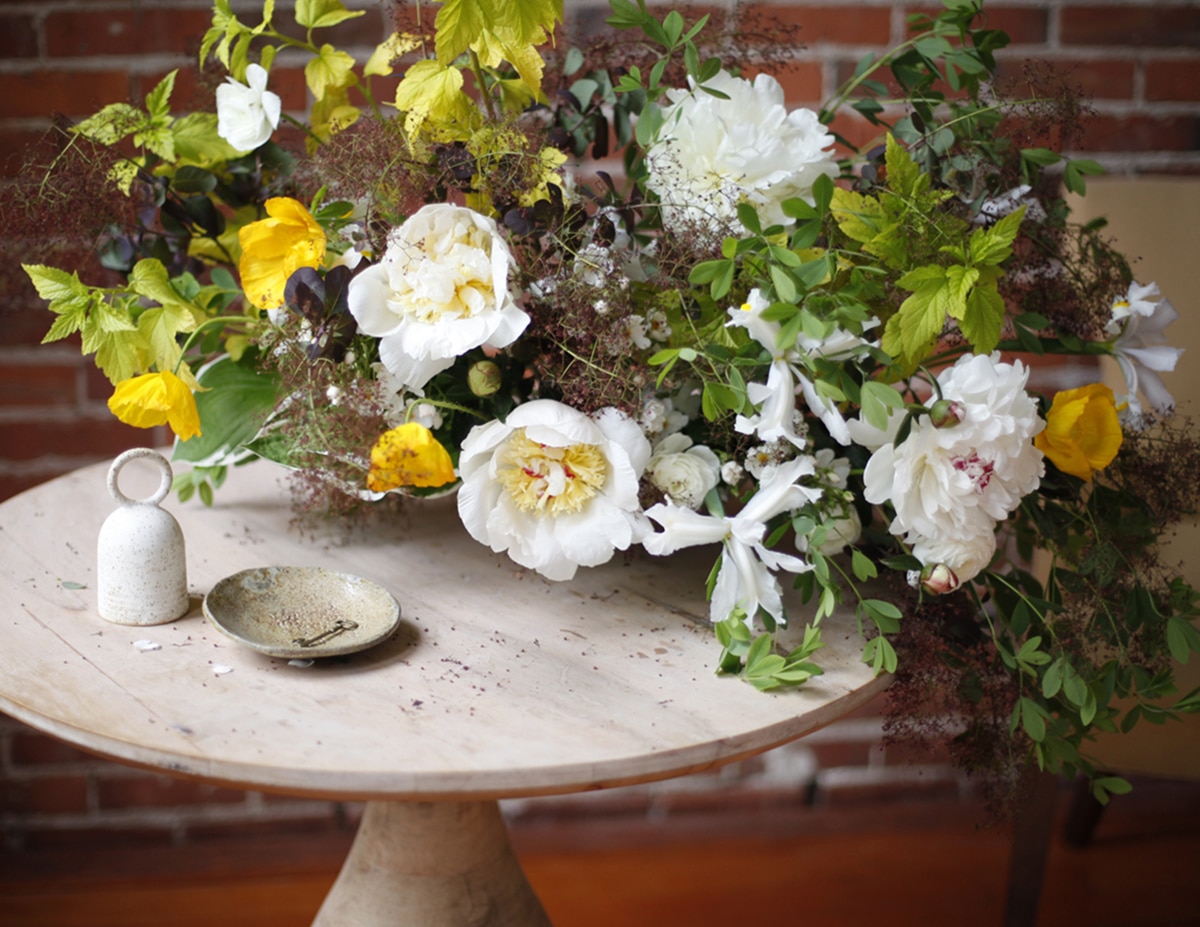
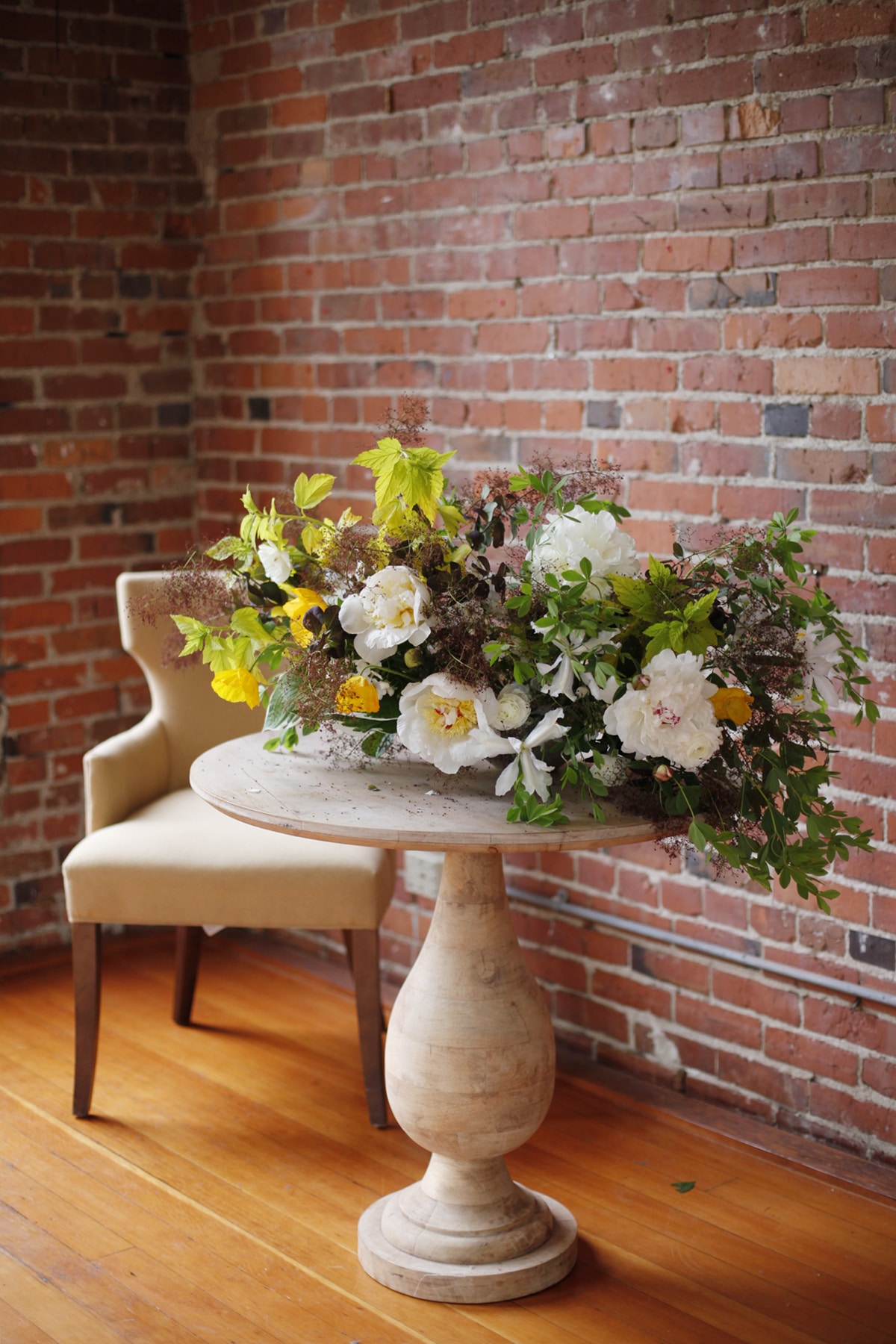
We look forward to hearing and seeing your explorations into Ikebana, and hope that you’ve enjoyed this refreshing, unique break in our floral how-to broadcasting. May these beautiful principles applied to Japanese floral arranging make a transference into your everyday lives.